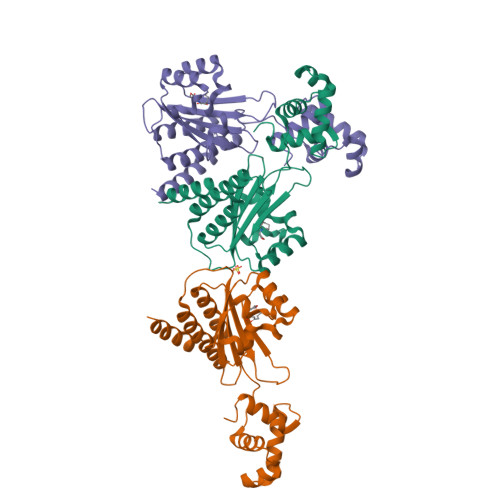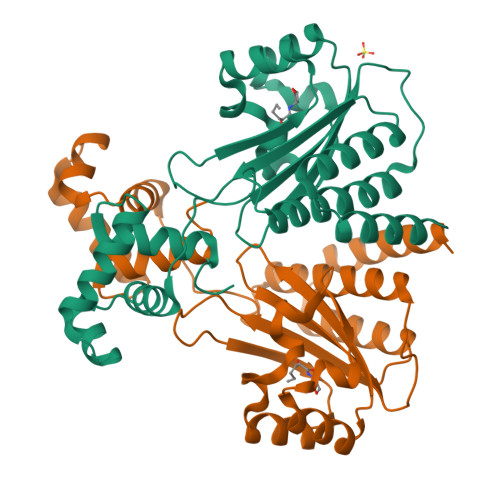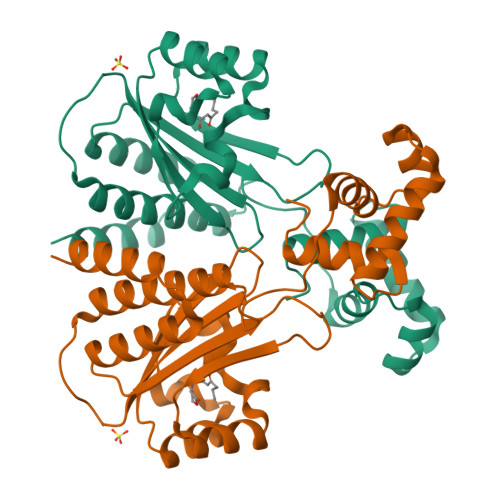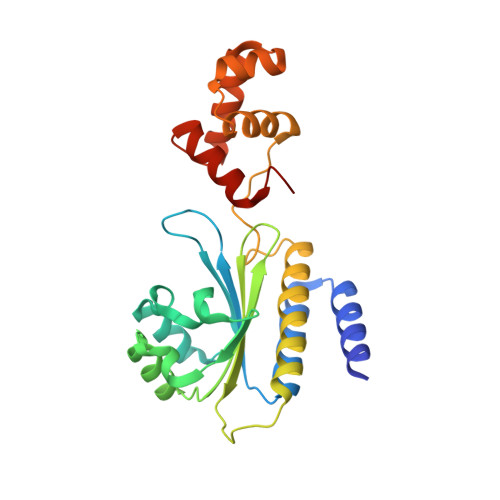Structural and Mechanistic Roles of Novel Chemical Ligands on the SdiA Quorum-Sensing Transcription Regulator.
Nguyen, Y., Nguyen, N.X., Rogers, J.L., Liao, J., MacMillan, J.B., Jiang, Y., Sperandio, V.(2015) mBio 6
- PubMed: 25827420
- DOI: https://doi.org/10.1128/mBio.02429-14
- Primary Citation of Related Structures:
4Y13, 4Y15, 4Y17 - PubMed Abstract:
Bacteria engage in chemical signaling, termed quorum sensing (QS), to mediate intercellular communication, mimicking multicellular organisms. The LuxR family of QS transcription factors regulates gene expression, coordinating population behavior by sensing endogenous acyl homoserine lactones (AHLs). However, some bacteria (such as Escherichia coli) do not produce AHLs. These LuxR orphans sense exogenous AHLs but also regulate transcription in the absence of AHLs. Importantly, this AHL-independent regulatory mechanism is still largely unknown. Here we present several structures of one such orphan LuxR-type protein, SdiA, from enterohemorrhagic E. coli (EHEC), in the presence and absence of AHL. SdiA is actually not in an apo state without AHL but is regulated by a previously unknown endogenous ligand, 1-octanoyl-rac-glycerol (OCL), which is ubiquitously found throughout the tree of life and serves as an energy source, signaling molecule, and substrate for membrane biogenesis. While exogenous AHL renders to SdiA higher stability and DNA binding affinity, OCL may function as a chemical chaperone placeholder that stabilizes SdiA, allowing for basal activity. Structural comparison between SdiA-AHL and SdiA-OCL complexes provides crucial mechanistic insights into the ligand regulation of AHL-dependent and -independent function of LuxR-type proteins. Importantly, in addition to its contribution to basic science, this work has implications for public health, inasmuch as the SdiA signaling system aids the deadly human pathogen EHEC to adapt to a commensal lifestyle in the gastrointestinal (GI) tract of cattle, its main reservoir. These studies open exciting and novel avenues to control shedding of this human pathogen in the environment. Quorum sensing refers to bacterial chemical signaling. The QS acyl homoserine lactone (AHL) signals are recognized by LuxR-type receptors that regulate gene transcription. However, some bacteria have orphan LuxR-type receptors and do not produce AHLs, sensing them from other bacteria. We solved three structures of the E. coli SdiA orphan, in the presence and absence of AHL. SdiA with no AHL is not in an apo state but is regulated by a previously unknown endogenous ligand, 1-octanoyl-rac-glycerol (OCL). OCL is ubiquitously found in prokaryotes and eukaryotes and is a phospholipid precursor for membrane biogenesis and a signaling molecule. While AHL renders to SdiA higher stability and DNA-binding affinity, OCL functions as a chemical chaperone placeholder, stabilizing SdiA and allowing for basal activity. Our studies provide crucial mechanistic insights into the ligand regulation of SdiA activity.
Organizational Affiliation:
Department of Physiology, University of Texas Southwestern Medical School, Dallas, Texas, USA.



















